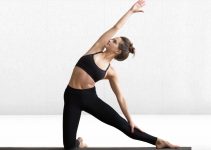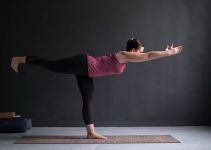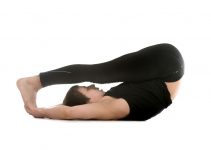- Standing poses
- Seated poses
- Prone poses
- Supine poses
- Forward bends
- Backbends
- Twists
- Balancing poses
- Inversion Poses
- Hip-Opening
- Core Strengthening
- Chest Opening
- Side Bending
- Meditation Poses
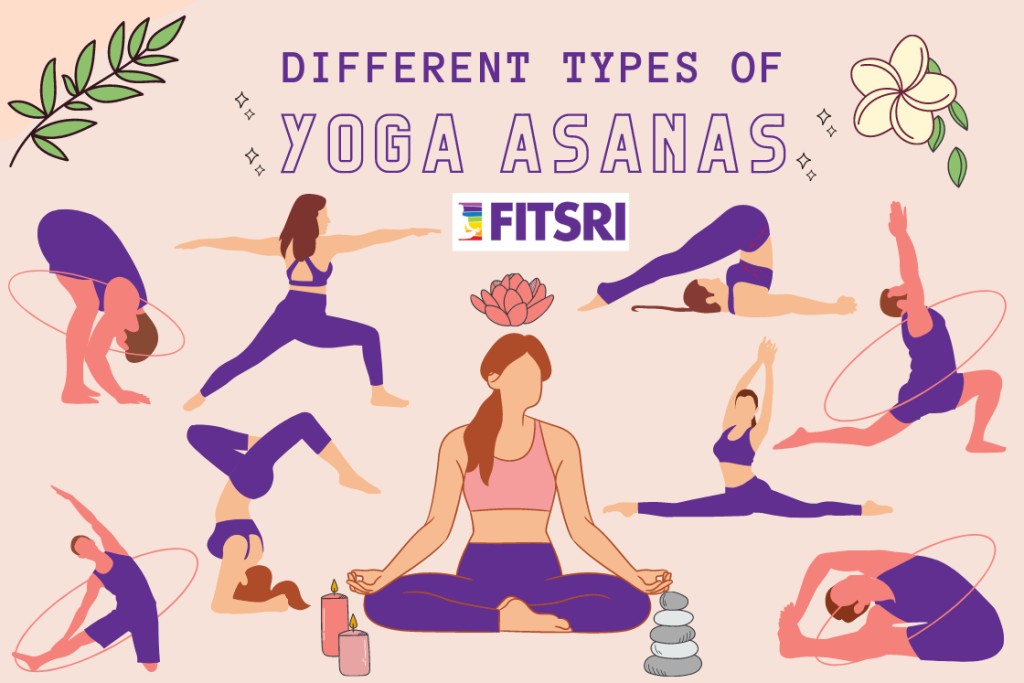
Welcome to our guide on 14 different types of asanas!
Asanas or poses are the most practised part of the whole yoga system. Traditionally asana in yoga is defined as a comfortable seat. There are more than 200 poses (asanas) in contemporary yoga. Categorizing so many poses into certain types of asanas is an easy way to get to know about their characteristics in general.
There are mainly 14 types of asanas based on physical orientations and focus on particular body parts. These 14 types sum up almost all known poses of yoga. Various asanas are designed to help practitioners achieve balance, flexibility, and relaxation.
In this article, we’ll cover 14 different types of asanas; including standing, sitting, twists, forward bends, backbends, and more. Assume any pose name in your mind and it will fall under one of the types of asanas we have included in this article. Each type will include several examples of poses of that category, along with their benefits and difficulty level.

1. Standing Poses
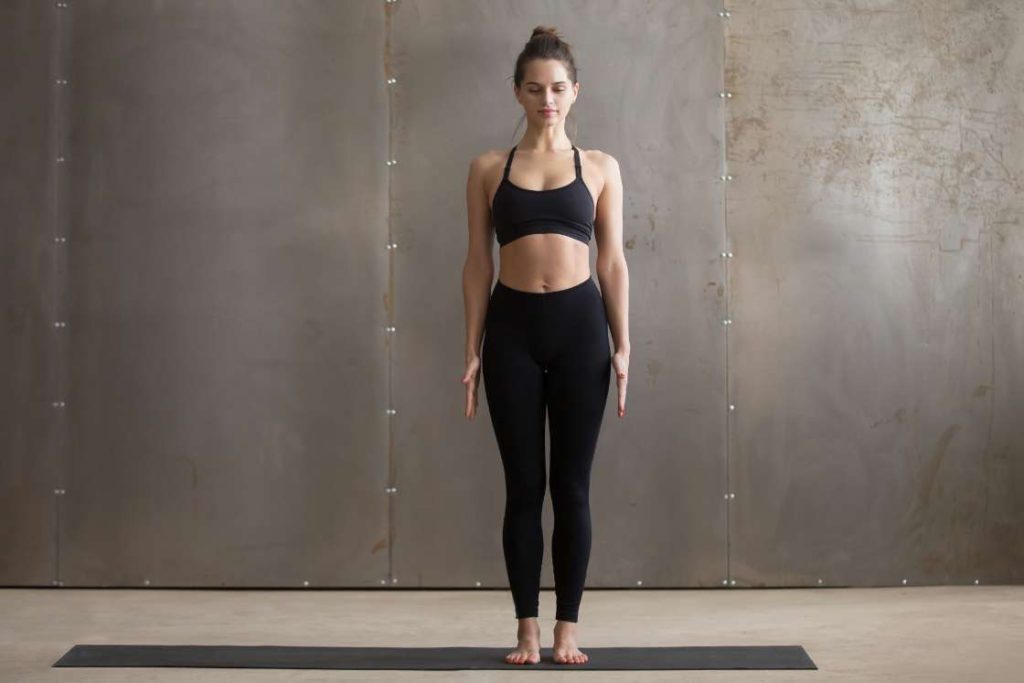
Standing poses are types of asanas which are performed while standing upright, with the feet firmly planted on the ground. You might either stand straight, bend forward, sideways, or even split your legs apart – all come under standing pose types. The key here is that your feet, either both or one, always touch the ground.
Mainly standing poses are used to build strength and flexibility throughout the entire body, preparing us for deeper stretches and more advanced asanas. They are the foundation of many beginner and advanced poses. They also act as a form of warm-up yoga as they activate all the muscles of the body. They are typically held for shorter periods of time than other poses, usually only two to four breaths long.
Benefits
Standing poses primarily build strong and stable legs, hips, and core muscles. These poses are great for developing strength and flexibility in the upper body (especially shoulders and chest) when the arms are raised. They are the go-to categories of poses to correct your posture and focus on the alignment of the spine.
In addition to their physical benefits, standing poses also help to ground us and connect us to the earth element within ourselves.
Examples
Some common standing poses include Mountain pose (tadasana), Tree pose (Vrikshasana), and the five Warrior poses. In Mountain pose, the feet are hip-width apart and the arms are at the sides of the body. In Tree pose, one foot is placed on the inside of the opposite thigh while the arms are raised overhead. The Warrior poses involve a series of lunges with the arms raised overhead in various positions.
Difficulty level
Standing poses require both flexibility and strength, making them a major component of a balanced yoga practice. Some standing poses which require you to balance or bend (forward/backward) can be challenging, especially for beginners, and should be approached with caution. It is important to pay attention to the placement of the feet, knees, hips, spine, and head to avoid injury.
An important tip to keep in mind when practising standing poses ensure that your body weight is evenly distributed in your feet, ankle, knees, and hips. The alignment of your head also plays an important role as it will pave the way for proper spinal alignment.
2. Seated Poses
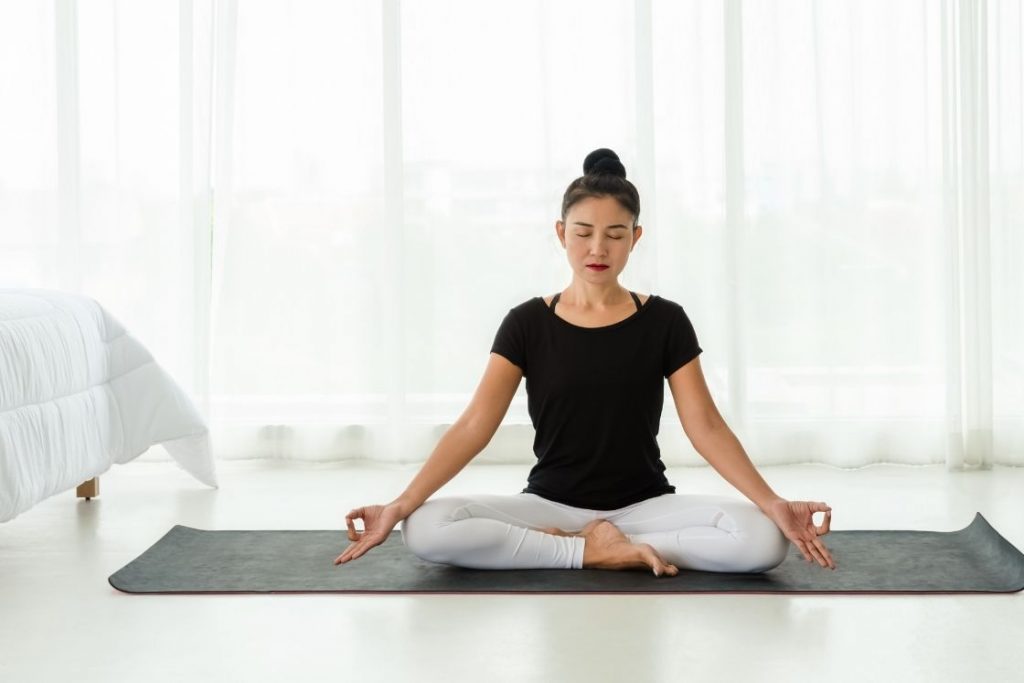
Seated poses, as the name suggests, indicate a pose wherein your buttock or sitting bones are in contact with the ground. In these types of poses, your legs might be extended in front of you (as in Dandasana – staff pose), crossed (as in Sukhasana – easy pose), or bent at the knees (as in Vajrasana – thunderbolt pose).
Sitting yoga poses are some of the most stabilizing poses as you have a large base of grounding. The seated poses are more about stretching and improving the range of motions of the hamstrings, quads, hips, calves, and lower back than strength. They help in calming the mind and relaxing the body. Therefore most of the meditative positions are seated poses only.
Benefits
Seated poses provide numerous benefits to the practitioner, including stretching and strengthening the muscles of the hips, legs, and back. They also help to improve spinal alignment and promote good posture. Seated poses are ideal for those who have difficulty standing for long periods or have injuries that prevent them from standing. They can be an excellent way to release tension and stress from the body and mind.
Seated poses can also be great for improving digestion and relieving menstrual cramps, back pain, and sciatica. When practised regularly, they can help to increase flexibility, reduce stiffness in the joints, and promote overall well-being.
Examples
Some common seated poses include Easy pose (Sukhasana), Seated Forward Fold (Paschimottanasana), and Lotus pose (Padmasana). In Easy pose, the legs are crossed with the ankles placed in front of the opposite knee. In Seated Forward Fold, the legs are extended straight in front of the body while the torso folds forward. In Lotus pose, the legs are crossed with the feet resting on opposite thighs.
Difficulty level
Seated poses are generally less physically demanding than standing poses, but they still require flexibility and strength. They are usually held for longer periods than standing poses, allowing the practitioner to deepen the stretch and increase flexibility. Certain seated poses that involve forward bending or twisting can be challenging for beginners, especially those with tight hips or hamstrings.
An important tip to keep in mind when practising seated poses is to sit up tall and engage the core muscles to support the spine. You can also use props such as blankets, blocks, or bolsters to help support the body and make the poses more comfortable.
3. Prone Poses
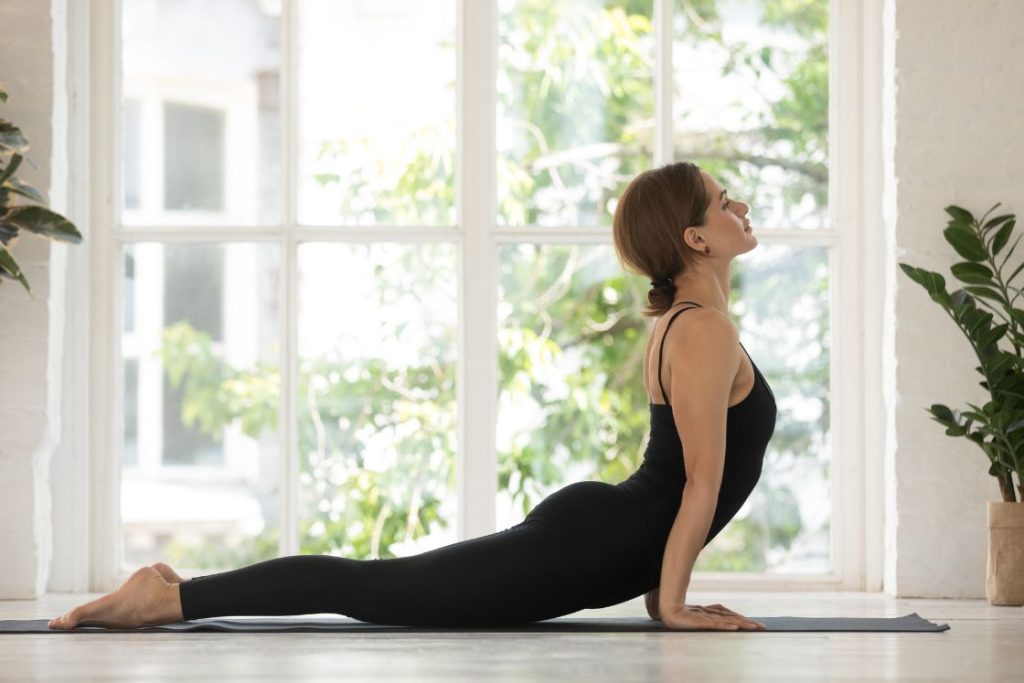
Based on the body position, prone poses are the type of asanas in which the practitioner’s stomach and face are towards the ground, or even touching the ground. These poses require a lot of core and upper body strength, making them a great addition to any yoga practice.
You will find that the most prone poses are backbends such as Cobra Pose, Locust Pose, and Sphinx Pose. These poses with back-bends are great for spinal flexion. They help in opening the heart centre and expanding the lung capacity by widening the chest.
Benefits
Prone poses primarily focus on strengthening the muscles of the back and the core. They can help to improve posture and relieve tension in the lower back and shoulders. These poses also help to stretch the muscles of the hips and thighs, which can help to improve flexibility and range of motion. In addition to their physical benefits, prone poses can also help to calm the mind and reduce stress and anxiety.
Examples
Some common prone poses include Cobra pose (Bhujangasana), Locust pose (Salabhasana), and Bow pose (Dhanurasana). In Cobra pose, the palms are placed on the mat next to the shoulders, and the upper body is lifted off the mat, stretching the muscles of the back. In Locust pose, the arms and legs are lifted off the mat, strengthening the muscles of the back and the glutes. Bow pose involves bending the knees and reaching back to grab the ankles, then lifting the upper body and legs off the mat.
Difficulty level
Prone poses can be challenging for beginners, as they require a lot of upper body and core strength. It is important to approach these poses with caution and to listen to your body. Most of the prone poses are contraindicated for pregnant women or people who have undergone surgery in the front part of the body.
Proper alignment is key in preventing injury in prone poses, so it is important to pay attention to the placement of the hands, feet, and shoulders. As with all yoga poses, it is important to work within your own limits and to progress slowly and safely.
4. Supine Poses
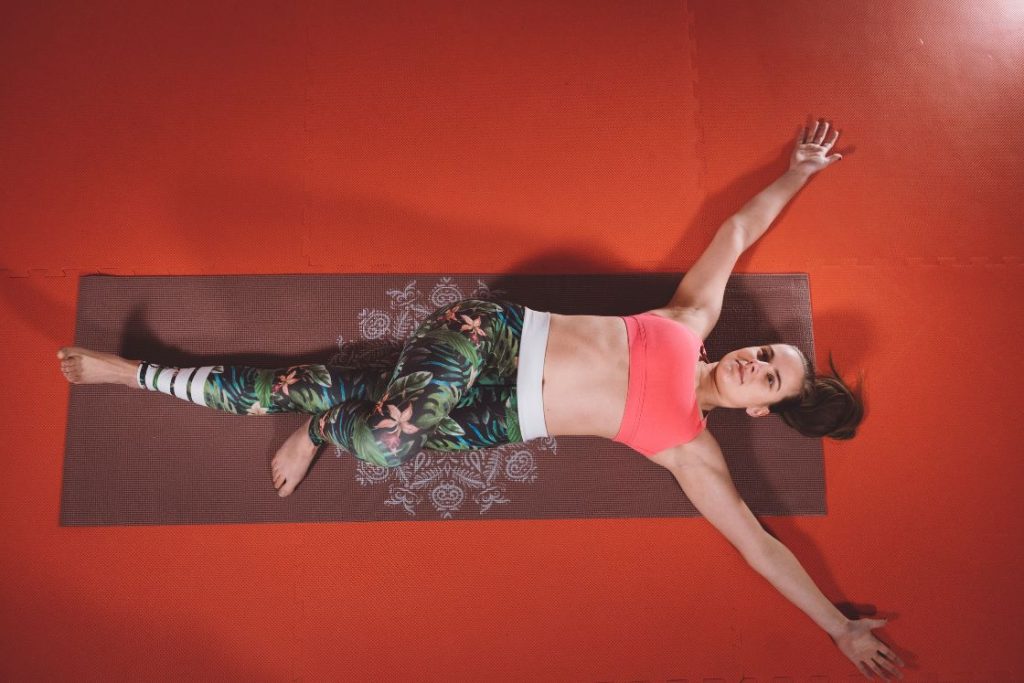
Supine poses are the type of yoga asanas that are performed while lying on your back with your face up. One of the most common supine pose is the Savasana (Corpse Pose) which is performed during a transition or at the end of the yoga session.
Also known as yoga postures lying on the back, most of the supine poses are extremely relaxing, cooling, and soothing in nature. They are often recommended for people who have trouble sleeping, suffer from insomnia, or have anxiety. Many supine poses can be made restorative when performed with props such as a blanket under the head and neck or a bolster under the knee.
Benefits
Supine poses help to stretch and strengthen different parts of the body, including the back, hips, legs, and arms. These poses can also improve posture, increase flexibility, and promote relaxation. They are particularly helpful for those who spend a lot of time sitting or standing, as they counteract the effects of these positions on the body.
Examples
Some common supine poses include Bridge pose (Setu Bandha Sarvangasana), Corpse pose (Savasana), and Reclining Bound Angle pose (Supta Baddha Konasana). In Bridge pose, the yogi lifts their hips off the ground while keeping their shoulders and feet on the floor. In Corpse pose, the yogi lies on their back with their arms and legs relaxed at their sides. In Reclining Bound Angle pose, the soles of the feet are brought together while the knees fall out to the sides.
When performing asanas while lying on your back, you can take leverage of gravity to increase your flexibility and strength in the spine and legs, as well as your ability to bend your back.
Difficulty level
Supine poses are generally considered to be accessible for yogis of all levels. However, some poses may require modifications or the use of props for beginners. As with any yoga practice, it is important to listen to your body and approach the poses with caution.
5. Forward-bending poses
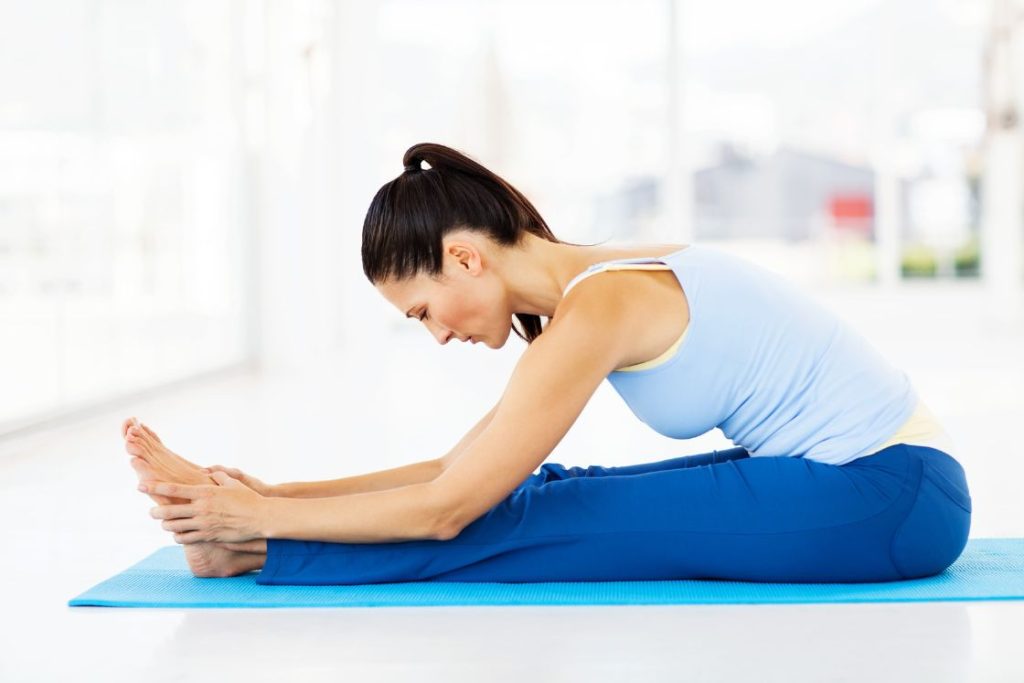
When you bring your front upper torso forward towards your lower body or vice-versa, you are performing a forward bending pose.
Forward bending poses are often included at the beginning of a yoga practice as a way to warm up the body and calm the mind. They can also be incorporated into a restorative yoga practice to promote relaxation and release tension in the body.
Benefits
The forward bends alleviate tension throughout the entire backside of the body by stretching and lengthening out stiff muscles while the front part of the body’s muscles is contracting.
Forward bending poses offer a range of benefits, including improved flexibility in the spine and hamstrings, as well as increased blood flow to the head and neck. Practising forward bending poses regularly can lead to better posture and increased mobility in the hips and lower back.
Forward folds are also known for their relaxing, introspecting, and calming characteristics and the head comes below the heart. It encourages the blood flow towards the head which is good for mental clarity and alleviating stress and tension. To make them restorative, teachers encourage including props like cushions and bolsters.
Examples
Some common forward bending poses include Standing Forward Bend (Uttanasana), Seated Forward Bend (Paschimottanasana), and Downward-Facing Dog (Adho Mukha Svanasana). In Standing Forward Bend, the feet are hip-width apart and the upper body is folded forward from the hips. In Seated Forward Bend, the legs are extended in front of the body and the upper body is folded forward over the legs. In Downward-Facing Dog, the body forms an inverted V-shape, with the hands and feet on the ground and the hips lifted.
The Plow Pose is one such forward bend that can be done in the supine position since you are bringing your lower body towards the torso.
Difficulty level
Forward bending poses can be challenging for beginners, as they require a certain degree of flexibility in the hamstrings and lower back. It is important to approach these poses with caution and avoid forcing the body beyond its natural limits. Modifications, such as bending the knees or using props, can be used to make these poses more accessible.
6. Back-bending Poses
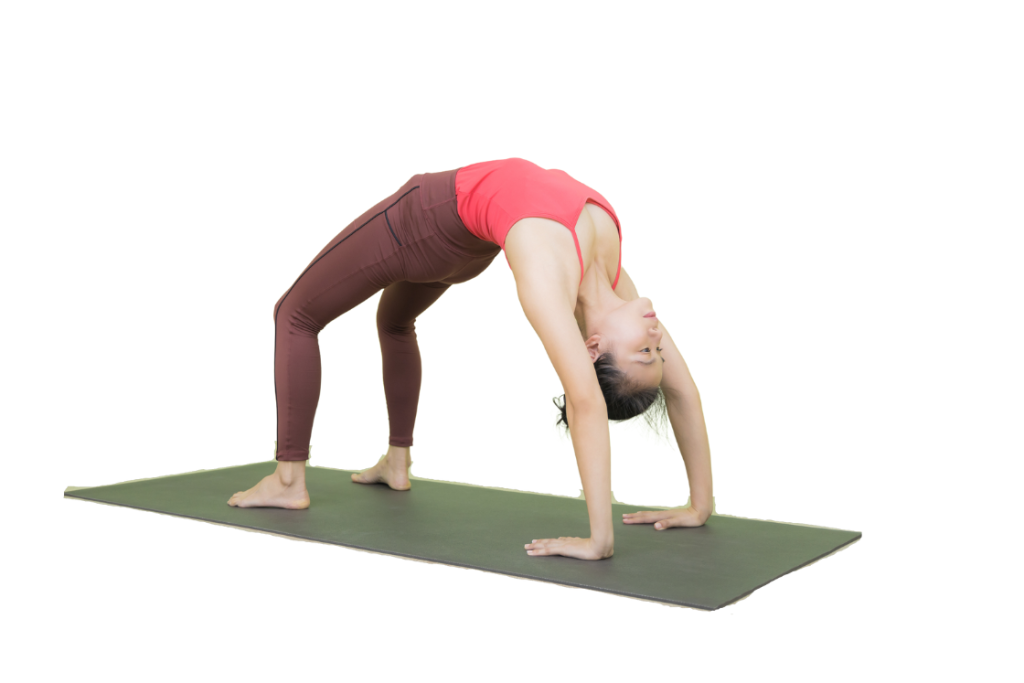
Backbends, also known as spinal extensions, are the type of yoga poses where the spine is stretched in the opposite direction of a forward bend. These poses are important for maintaining spinal health, flexibility and relieving tension from the lower back. Backbends can be both energizing and calming for the mind and body.
Backbends are often incorporated into yoga practice as a way to balance out the forward bending poses. They are typically practised towards the end of a sequence when the body is warmed up. It is important to engage the core muscles and lengthen the tailbone towards the heels to protect the lower back during backbends. Backbends can also be modified with props such as blocks, straps, or a bolster to make them more accessible for beginners or to deepen the pose for advanced practitioners.
Benefits
Backbends have many benefits, including improving posture and spinal alignment, strengthening the muscles of the back, chest, and shoulders, increasing lung capacity, and reducing stress and anxiety. These poses can also stimulate the nervous system, improve digestion, and boost the immune system.
Examples
Some common backbend poses include Cobra (Bhujangasana), Upward Facing Dog (Urdhva Mukha Svanasana), Bridge (Setu Bandha Sarvangasana), Camel (Ustrasana), and Wheel (Urdhva Dhanurasana). In Cobra pose, the chest is lifted off the ground while the hands are placed beneath the shoulders. In Upward Facing Dog, the body is lifted off the ground with the arms straight and the chest open. In Wheel pose, the body is lifted off the ground while the hands and feet are firmly planted.
Back-bend doesn’t necessarily mean that your entire upper body should be tilted back. The key here is the aspect of spinal extension. Poses like Cow Pose and Bridge Pose also have an aspect of spinal extension, making them a part of the backend category.
Difficulty level
Backbends can be challenging for beginners, especially if there is limited flexibility in the spine or chest.
When performing a back bend you must be careful of your body limit. The moment you feel a strain, you must come out of the pose and look for other safe variations to perform the pose. Placing your hands on your lower back, buttocks, or the back of your thighs can be of huge help.
7. Twisting Poses
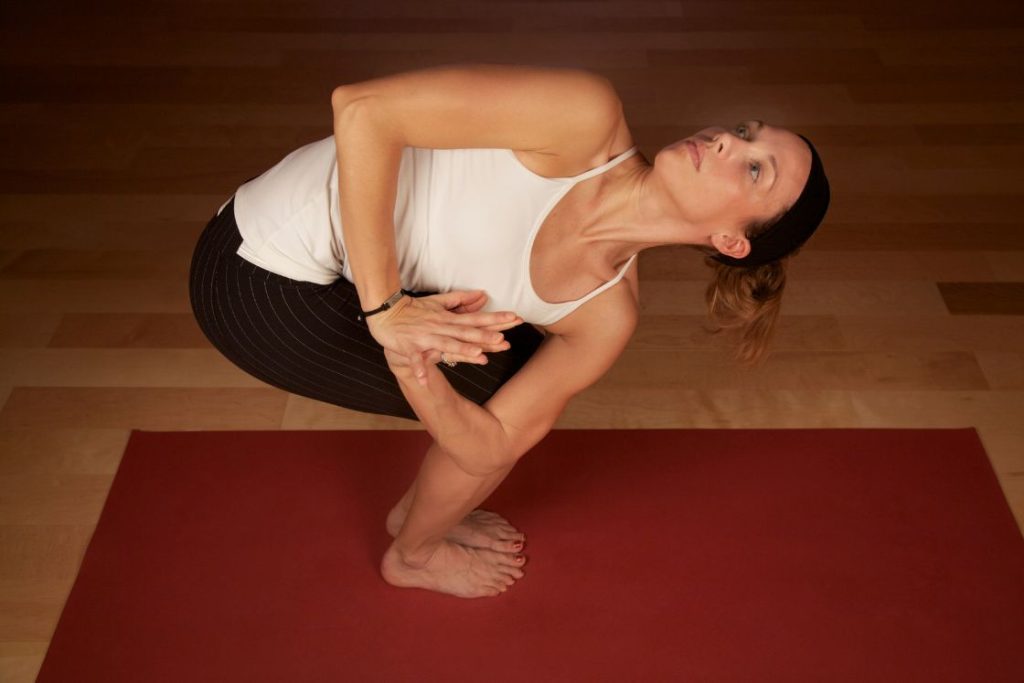
Twisting yoga poses are the type of asanas where the spine is rotated or twisted around the centre. These poses can be done seated, standing, or even lying down (supine or prone), and involve twisting the torso to one side or the other.
Twisting poses are considered to be energizing and invigorating, as they help to stimulate the nervous system and increase circulation. They are often used towards the end of a yoga practice to prepare the body for relaxation and meditation. Twisting poses can also help to release tension and tightness in the muscles and improve overall flexibility.
Benefits
Twisting postures have numerous benefits; they help to stimulate digestion, improve spinal mobility and flexibility, and increase circulation to the internal organs. Twisting poses also help to detoxify the body by releasing tension and toxins from the muscles and organs. Additionally, they can help to relieve back pain and improve posture.
Examples
Common twisting poses include seated spinal twist (Ardha Matsyendrasana), supine spinal twist (Supta Matsyendrasana), and twisted lunge (Parivrtta Anjaneyasana). In seated spinal twist, the torso is rotated to one side while the legs are folded. In supine spinal twist, the legs are straight and twisted to one side while the arms are extended out to the sides. In twisted lunge, one leg is forward in a lunge position while the torso is twisted to the opposite side.
Difficulty level
Twisting poses can be challenging, especially for beginners. They require good spinal flexibility and strength. Beginners should start with gentle twists and gradually work their way up to more advanced poses.
8. Balancing Poses
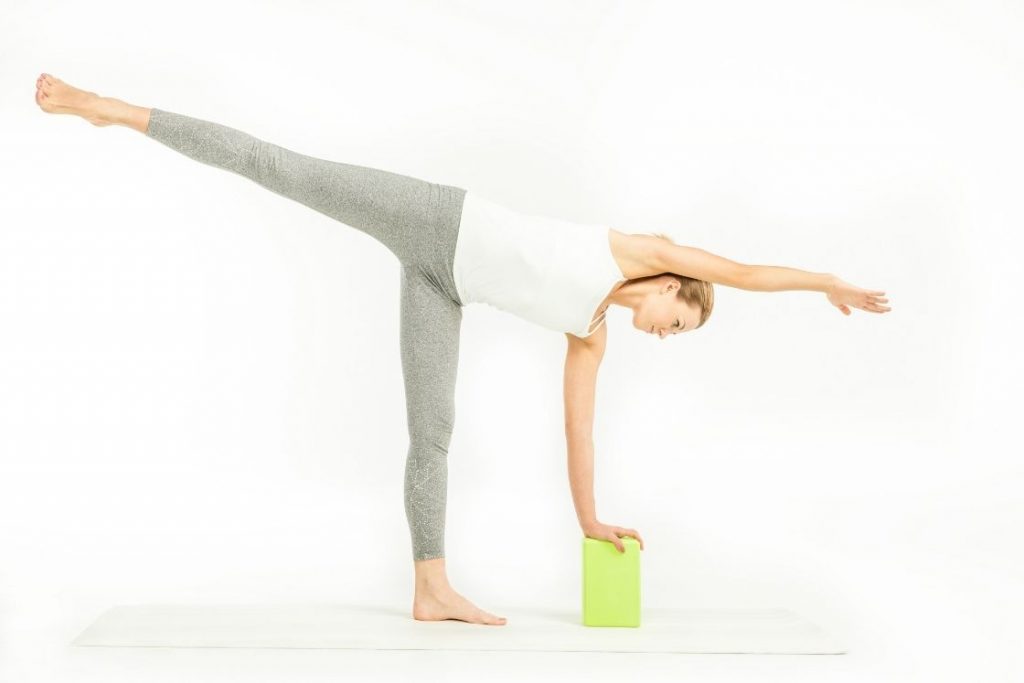
Balancing poses are the types of asanas in which you balance the body weight either on one leg or on your arms. These poses help strengthen your hamstrings, calves, quadriceps, glutes, and abs. They need more core strength and stability than any other type of pose.
Balancing poses are typically performed towards the middle or end of a yoga class after the body has been warmed up and the mind has been centered. They can be a fun and challenging way to build strength and improve overall balance and coordination. It is important to approach these poses with patience and a sense of playfulness, as it may take time to develop the necessary strength and stability.
Benefits
Practising balancing poses can lead to improved posture and core strength. They also promote flexibility and can help to reduce stress and anxiety. Additionally, balancing poses require focus and concentration, which can improve mental clarity while fostering self-assurance, grit, and resolve.
Examples
Common balancing poses include Tree pose (Vrikshasana), Warrior III (Virabhadrasana III), and Half Moon pose (Ardha Chandrasana). In Tree pose, the practitioner balances on one foot while placing the other foot on the inner thigh. In Warrior III, the practitioner extends one leg backward while keeping the core engaged and the arms extended forward. Half Moon pose requires the practitioner to balance on one foot while reaching the opposite arm and leg in opposite directions.
Difficulty Level
Balancing poses can be challenging, especially for beginners. It is important to approach these poses with caution and to use props or modifications if needed. Some common balancing poses, such as Tree pose and Warrior III, require a significant amount of balance and coordination, while others, such as Half Moon pose, may require more flexibility.
9. Inversion Poses
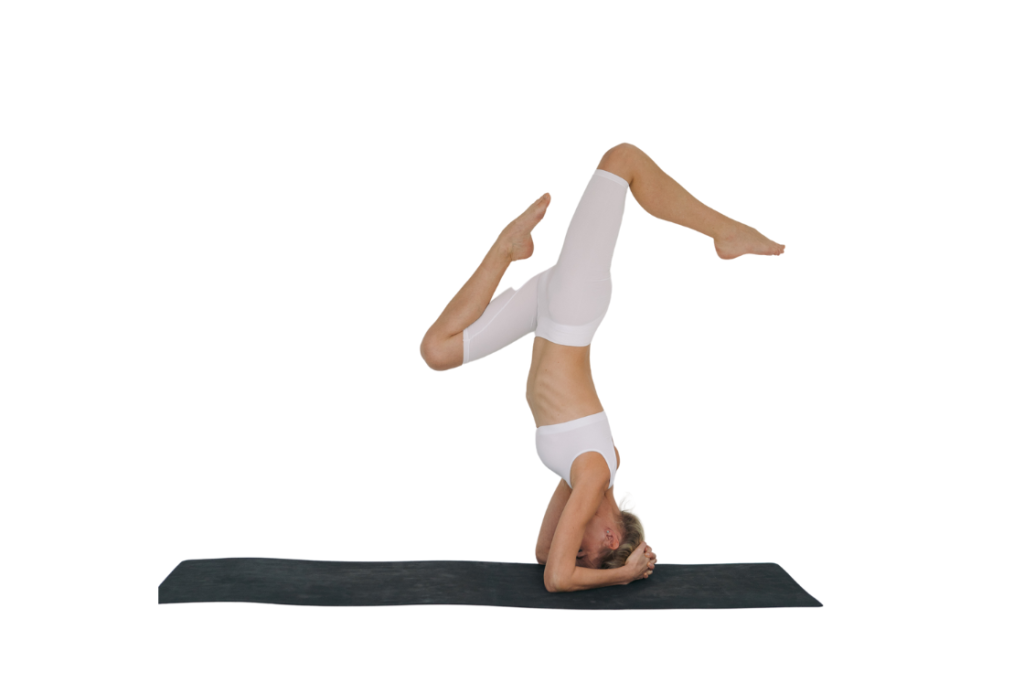
Inversion poses are the types of yoga asanas that involve turning the body upside down, with the head below the heart. These poses are often considered more advanced and can be intimidating for beginners, but they offer a wide range of benefits for both the body and the mind.
Benefits
Practising inversion poses can help to improve circulation, increase blood flow to the brain, and boost the immune system. They also help to develop balance, strengthen the core, and increase overall body awareness and control. Inversions can also be great for reducing stress, anxiety, and depression by promoting relaxation and mindfulness.
Examples
Some common inversion poses include Shoulder Stand (Sarvangasana) and Headstand (Sirsasana). In Shoulder Stand, the legs are lifted up towards the ceiling while the shoulders and back of the head remain on the mat. In Headstand, the body is lifted up onto the head and forearms, with the legs extending up towards the ceiling.
Downward Facing Dog Pose and Standing Forward Fold is also considered a type of mild inversion pose as the head is significantly lower than the heart and the hips.
Difficulty level
Inversions can be challenging for beginners and should be approached with caution. It’s important to build strength and stability in the upper body, particularly the shoulders and arms, before attempting more advanced inversions such as headstands or handstands. Practising with a qualified teacher and using props such as walls or blocks can also help to support and guide your practice.
10. Hip-opening Poses
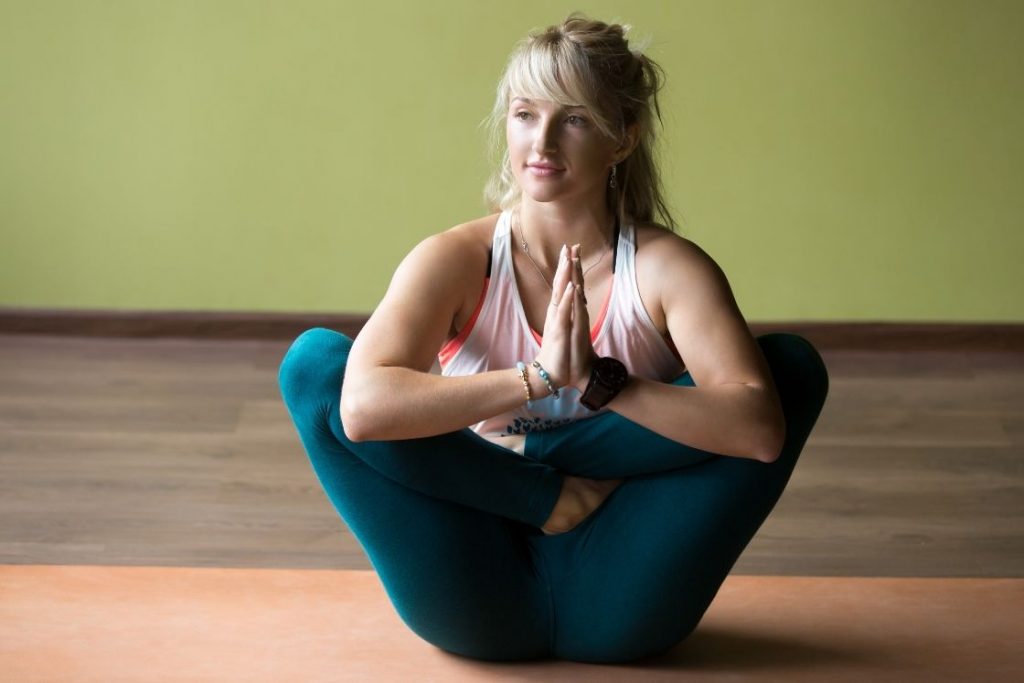
Based on the focus on particular body parts, yoga asanas can be categorised as hip-opening poses.
Yoga poses that promote stretching and opening of the hip and the surrounding muscles at the hip joint are a part of hip-opening poses. Most hip-opening poses are performed while seated as it encourages deeper stretch.
Hip-opening poses are often included in a typical yoga class sequence, particularly in classes focused on stress relief, relaxation, or physical therapy. They can also be used in combination with other yoga poses to create a well-rounded practice that addresses all areas of the body. It is essential to warm up the body before practising hip-opening poses, as the hips are a complex joint that requires proper preparation to avoid injury.
Benefits
Hip-opening poses have several benefits, including improving flexibility, increasing circulation, and reducing lower back pain. These poses can also help to release stored emotions and tension that are often held in the hips, leading to an increased sense of emotional and mental well-being.
Examples
Some common hip-opening poses include pigeon pose (Eka Pada Rajakapotasana), and butterfly pose (Baddha Konasana). In pigeon pose, the front leg is bent at a 90-degree angle, while the back leg is extended behind the body. In butterfly pose, the soles of the feet are brought together, and the knees are opened out to the sides.
Difficulty level
Hip-opening poses can be challenging, especially for beginners, as they require a combination of flexibility, strength, and balance. It is important to approach these poses with caution and listen to your body to avoid injury.
11. Core strengthening Poses
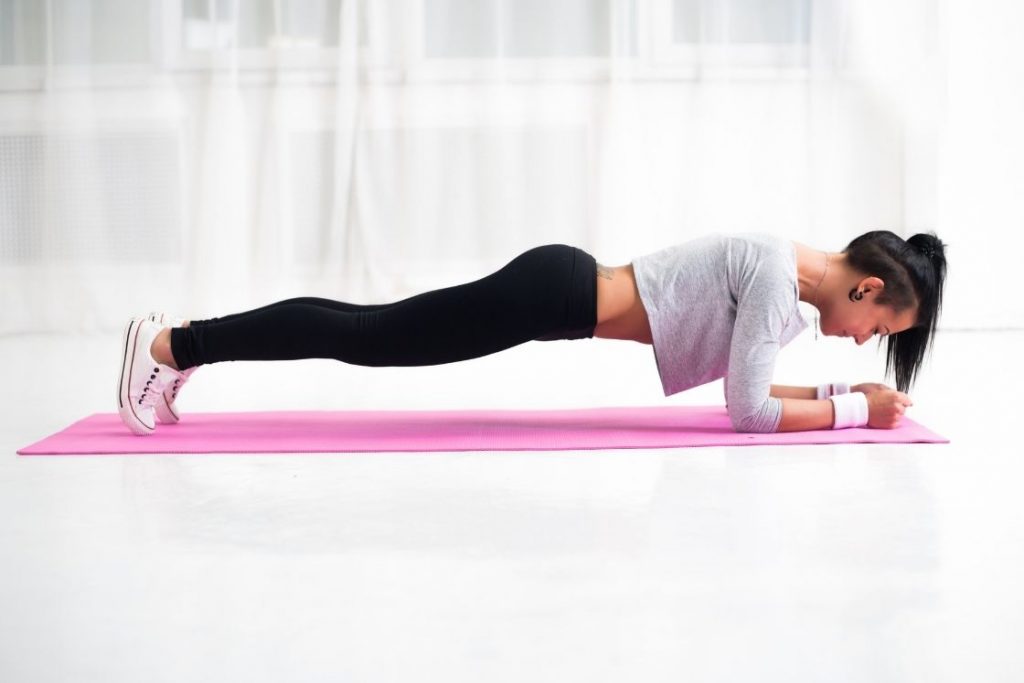
Core strengthening poses are the type of yoga poses that focus on building and strengthening the muscles of the core, including the abs, obliques, and lower back. These poses are essential for developing core strength, which is important for maintaining proper posture, improving balance, and supporting the spine.
Benefits
Practising core strengthening poses regularly can help to tone and strengthen the muscles of the abdomen and lower back, which can improve overall core stability. This increased strength and stability can improve balance and support proper alignment of the spine, reducing the risk of injury. Core strengthening poses also help to improve digestion, boost metabolism, and promote overall physical and mental well-being.
Examples
Some common core strengthening poses include Boat pose (Navasana), Plank pose (Phalakasana), and Side plank (Vasisthasana). In Boat pose, you balance on your sit bones and lift your feet and arms off the ground. In Plank pose, you hold your body in a straight line, supported by your arms and toes. In Side plank, you balance on one arm and the side of one foot, with the other arm and leg lifted.
Difficulty level
Core strengthening poses can be challenging, especially for beginners. They require both strength and flexibility and should be approached with caution. It is important to pay attention to the alignment of the spine, hips, and shoulders to avoid injury.
12. Chest Opening Poses
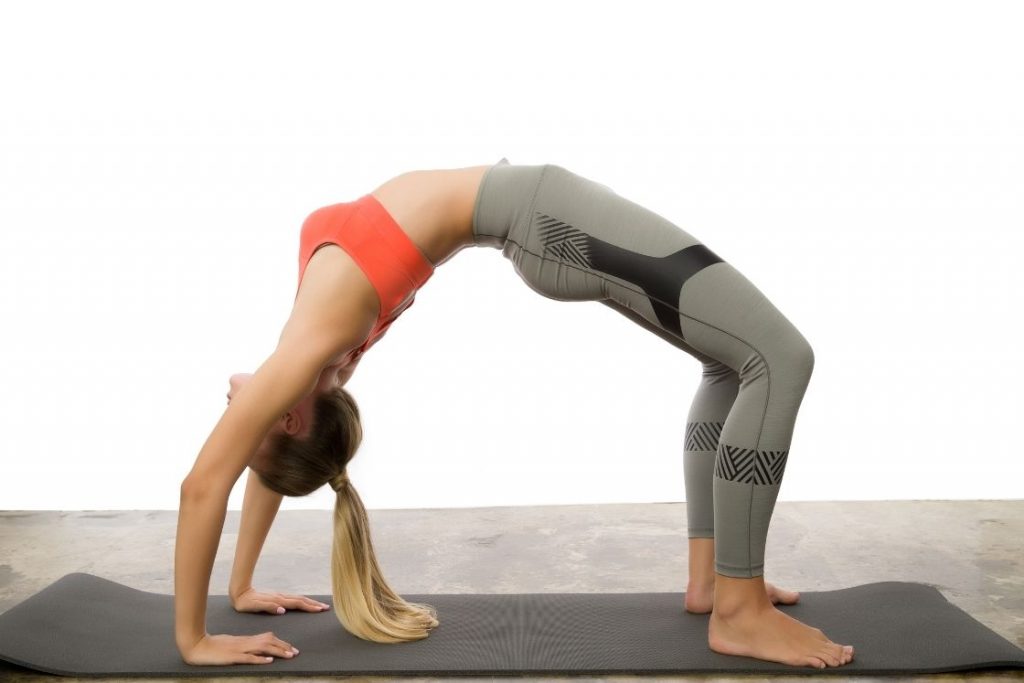
Chest opening poses are a type of yoga posture that focuses on stretching and opening the chest and shoulder muscles. These poses are important for improving posture and reducing tension in the upper body.
These poses are often incorporated into a yoga class sequence after a series of forward folds to create balance in the body. They can also be practised on their own as a way to counteract the effects of sitting and slouching.
Benefits
Chest opening poses help to stretch the chest muscles, which can become tight due to poor posture, stress, and lack of movement. They also help to strengthen the back muscles, which can improve posture and reduce back pain. Additionally, these poses can help to reduce tension and stress in the upper body, promoting feelings of relaxation and calm.
Examples
Common chest opening poses include Cobra pose (Bhujangasana), Upward-Facing Dog pose (Urdhva Mukha Svanasana), and Camel pose (Ustrasana). In Cobra pose, the hands are placed beneath the shoulders and the chest is lifted off the ground. In Upward-Facing Dog pose, the hands are placed beneath the shoulders and the chest is lifted off the ground while the legs are straight. Camel pose involves kneeling and reaching back to grab the ankles while lifting the chest and keeping the neck long.
Difficulty level
Some chest opening poses can be challenging, especially for beginners. Poses that involve deep backbends may require more flexibility and strength. It’s important to listen to your body and only go as far as feels comfortable. Modifications and props, such as blocks or bolsters, can be used to make the poses more accessible.
13. Side Bending Poses
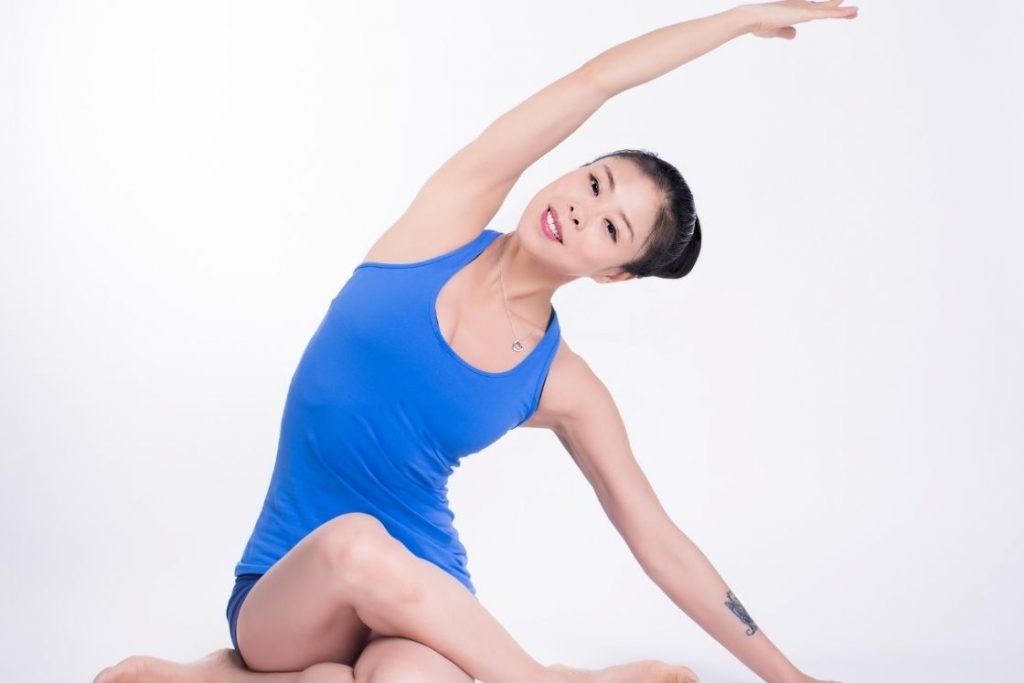
Side bending poses are types of yoga postures that involve stretching the muscles on the sides of the body. These poses are typically done while standing, seated, or lying down and involve bending the torso to one side or the other.
Benefits
Practising side bending poses can help to improve flexibility in the spine, increase lung capacity and improve breathing, and reduce tension in the neck and shoulders. It makes them good stretches to do before pranayama practice. These poses also stimulate the digestive system and help to improve circulation.
Examples
Common side-bending poses include Triangle pose (Trikonasana), Half Moon pose (Ardha Chandrasana), and Gate pose (Parighasana). In Triangle pose, the feet are spread wide apart and the torso is bent to one side, with the arm on that side reaching towards the ground and the opposite arm reaching up towards the sky.
Difficulty level
The difficulty level of side bending poses varies depending on the specific pose. Some poses may be more challenging for beginners, especially those that require balancing or twisting. It is important to approach these poses with caution and listen to your body.
14. Meditation Poses
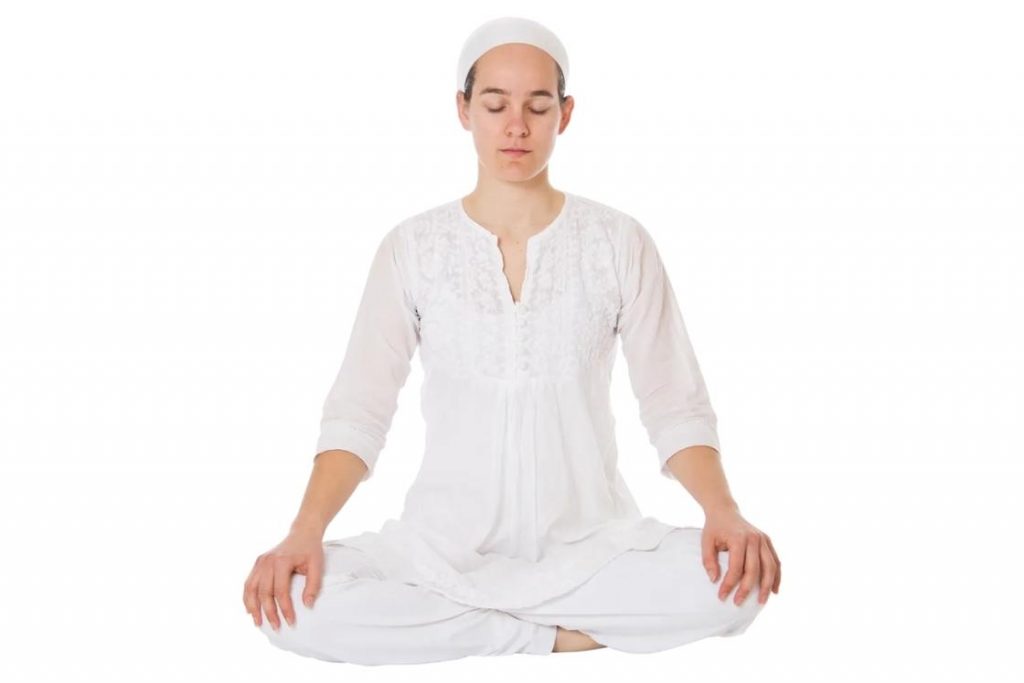
Meditation poses are designed to facilitate mental focus and relaxation. In this type of pose, the body is typically seated in a comfortable and stable position, allowing the mind to quiet down and find inner stillness.
These poses are typically practiced at the beginning or end of a yoga session, but can also be incorporated into the middle of a practice. It is important to find a comfortable and stable position and to focus on the breath and sensations in the body while practising these poses. It is also common to incorporate mantra chanting or visualization techniques into a meditation practice.
Benefits
The benefits of meditation poses are primarily related to mental and emotional well-being. These poses help to calm the mind, reduce stress and anxiety, and increase self-awareness. They can also improve concentration, boost memory and cognition, and promote better sleep. Additionally, some meditation poses can help to relieve physical tension in the neck, shoulders, and back.
Examples
Common meditation poses include Lotus pose (Padmasana), Easy pose (Sukhasana), and Accomplished pose (Siddhasana). In Lotus pose, the legs are crossed with each foot resting on the opposite thigh, and the hands are placed on the knees or held in a mudra. Easy pose involves sitting cross-legged with the hands resting on the knees or in the lap.
Difficulty level
While meditation poses are generally accessible to all levels of practitioners, they can be challenging for those who struggle with sitting still for extended periods of time. Some poses may require the use of props such as blankets or blocks to make them more comfortable and accessible.
Conclusion
Different types of yoga asanas are essential to creating a well-rounded yoga practice that balances strength, flexibility, and relaxation. Incorporating various types of asanas, such as standing poses, forward bends, backbends, twists, balancing poses, inversions, hip-opening poses, core strengthening poses, chest opening poses, side bending poses, and meditation poses, can provide a comprehensive workout for the body and mind
When sequencing different types of yoga asanas, it’s important to consider the purpose of each pose and how it can complement the preceding and succeeding poses.
- Beginning with a gentle warm-up, such as meditation or pranayama, can help to prepare the body and mind for the more challenging asanas.
- Incorporating standing poses early in the sequence can help to build strength and stability while hip-opening poses and forward bends can promote flexibility and relaxation.
- Including core strengthening poses and balancing poses can help to improve overall balance and stability, while backbends and chest opening poses can counteract the effects of prolonged sitting and poor posture.
- Finally, ending the sequence with relaxation poses, such as savasana, or sitting in meditation poses can help to calm the mind and promote a sense of peace.
